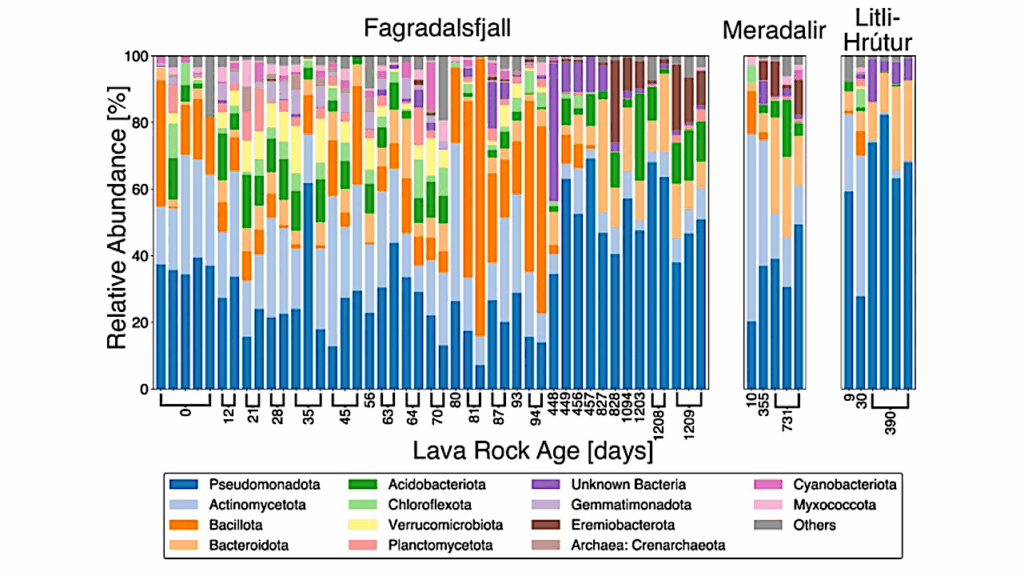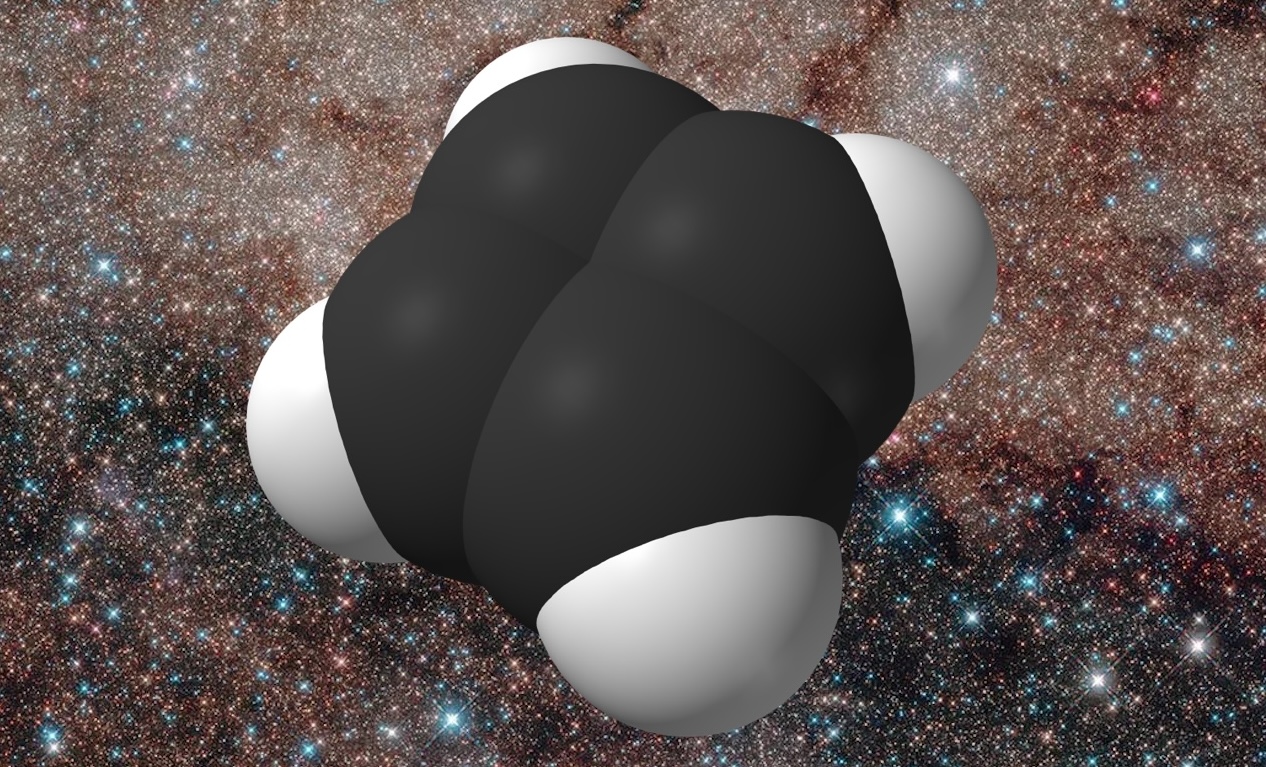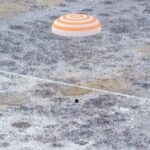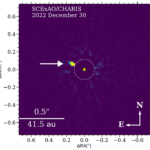Now Reading: Effects of Transient Stellar Emissions On Planetary Climates Of Tidally-locked Exo-earths
-
01
Effects of Transient Stellar Emissions On Planetary Climates Of Tidally-locked Exo-earths
Effects of Transient Stellar Emissions On Planetary Climates Of Tidally-locked Exo-earths
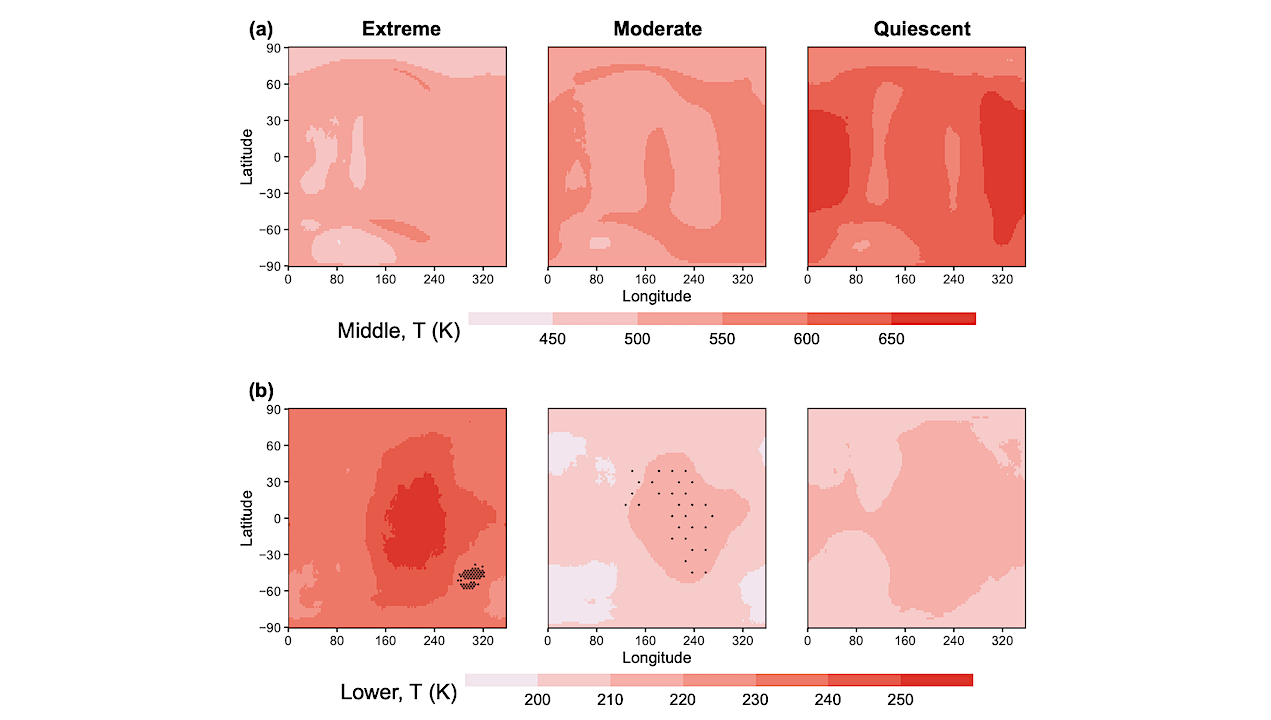

Temporal medians of ’Extreme’, ’Moderate’, and ’Quiescent’ simulations for Temperature (T in K). Medians are taken from 8 years and for (a) 1.223 × 10−5 mbar and (b) 0.008 mbar atmospheric levels. Extreme and Moderate medians are only taken for days when flares occur. Stippling uses a two-tailed Wilcoxon rank-sum test to represent ’Extreme’ and ’Moderate’ areas that are not statistically different from the ’Quiescent’ one at p0.01 — astro-ph.EP
Space weather events in planetary environments sourced from transient host star emissions, including stellar flares, coronal mass ejections, and stellar proton events, can substantially influence an exoplanet’s climate and atmospheric evolution history.
These time-dependent events may also affect our ability to measure and interpret its properties by modulating reservoirs of key chemical compounds and changing the atmosphere’s brightness temperature. The majority of previous work focusing on photochemical effects used single-column models.
Here, using three-dimensional (3D) general circulation models with interactive photochemistry, we simulate the climate and chemical impacts of stellar flare-sourced energetic particle precipitation.
We examine their effects on synchronously rotating TRAPPIST-1e-like planets on a range of spatiotemporal scales. We find that sudden thermospheric cooling is associated with radiative cooling of NO and CO2, and middle-to-lower atmospheric warming is associated with transient increases in infrared absorbers such as N2O and H2O. In certain regimes, these temperature changes are strongly affected by O3 variability depending on the flare’s spectral shape and energy.
However, the role of O3 in temperature change is reduced in the most extreme flaring scenarios explored in our simulations. In addition to effects on planetary climate and atmospheric chemistry, we also find that intense flares can energize the middle atmosphere, causing enhancements in wind velocities up to 40 m s−1 in sub-stellar night-sides between 30 and 50 km in altitude.
Our results suggest that successive, energetic eruptive events from younger stars may be pivotal factors in determining the atmosphere dynamics of their planets.
Howard Chen, Paolo De Luca, Assaf Hochman, Thaddeus D. Komacek
Comments: 11 figures, 2 tables; accepted for publication in the AAS Journals
Subjects: Earth and Planetary Astrophysics (astro-ph.EP)
Cite as: arXiv:2505.03723 [astro-ph.EP](or arXiv:2505.03723v1 [astro-ph.EP] for this version)
https://doi.org/10.48550/arXiv.2505.03723
Focus to learn more
Related DOI:
https://doi.org/10.3847/1538-3881/add33e
Focus to learn more
Submission history
From: Howard Chen
[v1] Tue, 6 May 2025 17:51:42 UTC (4,480 KB)
https://arxiv.org/abs/2505.03723
Astrobiology
Stay Informed With the Latest & Most Important News
Previous Post
Next Post
-
 012024 in Review: Highlights from NASA in Silicon Valley
012024 in Review: Highlights from NASA in Silicon Valley -
 02Panasonic Leica Summilux DG 15mm f/1.7 ASPH review
02Panasonic Leica Summilux DG 15mm f/1.7 ASPH review -
 03How New NASA, India Earth Satellite NISAR Will See Earth
03How New NASA, India Earth Satellite NISAR Will See Earth -
 04And Thus Begins A New Year For Life On Earth
04And Thus Begins A New Year For Life On Earth -
 05Astronomy Activation Ambassadors: A New Era
05Astronomy Activation Ambassadors: A New Era -
 06From Polymerization-Enabled Folding and Assembly to Chemical Evolution: Key Processes for Emergence of Functional Polymers in the Origin of Life
06From Polymerization-Enabled Folding and Assembly to Chemical Evolution: Key Processes for Emergence of Functional Polymers in the Origin of Life -
07SpaceX launch surge helps set new global launch record in 2024














